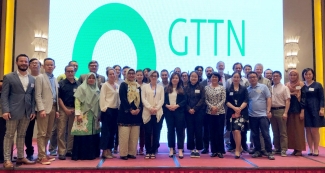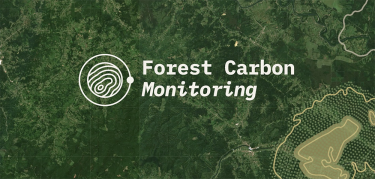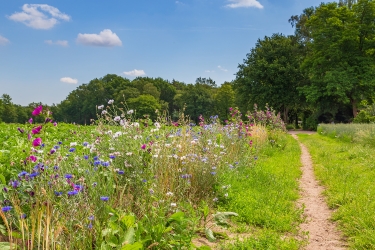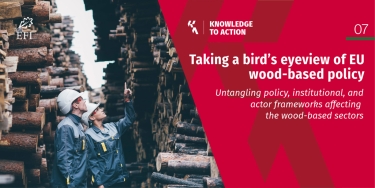GTTN bridges the gap

Where does your wood come from?
Have you ever wondered what the story of a specific wood product is? Most likely, you might be able to find some information, such as the country of origin or timber species on the product label. You might also be able to find out whether it comes from a sustainably managed forest through a forest certification scheme logo. But the information provided might not provide the full picture of how your wood product was sourced. Thankfully, however, there are many different actors and frameworks in place to make sure your wood produce was not produced by unsustainably, such as illegal logging.
What is illegal logging?
We can narrow this down to harvesting, processing, transporting, buying or selling timber in contravention of national and international laws. Illegal logging and related trade pose a significant threat to the sustainability of forest ecosystems, cause losses of government revenues, foster a vicious cycle of bad governance, and contribute to increased poverty and social conflict.
Legal frameworks to combat illegal logging
Several legal frameworks established worldwide in the past 20 years are aimed at preventing the importation of illegal timber, improving the supply of legal timber and increasing the demand for timber from responsibly managed forests.
EU
• 2003: The EU Forest Law Enforcement, Governance and Trade (FLEGT) Action Plan (including Voluntary Partnership Agreements)
• 2010: the EU Timber Regulation
US
• 2008: amendment of the Lacey Act to include a broader range of plant products in the US
Australia
• 2012: the Illegal Logging Prohibition Act
• 2013: Illegal Logging Prohibition Amendment Regulation
Asia
• 2009: the EU-China Bilateral Coordination Mechanism on Forest Law Enforcement and Governance (BCM). The BCM is a forum for policy dialogue a mechanism for sharing information on policies and legal frameworks, and for coordinating initiatives to help prevent illegal logging and associated trade.
• 2012: Republic of Korea, the Forest Legislation includes an article on countermeasures against illegal timber
• 2016: Clean Wood Act in Japan with subsequent implementation through Ministerial Ordinances.
• 2019: The Forest Policy Facility in Beijing implements the bilateral cooperation between the German Federal Ministry of Food and Agriculture (BMEL) and the National Grassland and Forestry Administration (NFGA) to further improve China’s forest and wood sector framework conditions and management.
Scientific methods for tracking illegal timber
In 2012, on the initiative of the German Federal Ministry of Food and Agriculture (BMEL), the Global Timber Tracking Network (GTTN) was launched and coordinated by Bioversity International. The project has developed innovative methods for identification of wood species and their origin to verify trade claims and assist the fight against illegal logging and related trade. There are three main methods used for wood identification:
1. Examining wood macroscopic and microscopic anatomical features (including use of digital image analysis),
2. Analysing the DNA
3. Using chemistry applications such as stable isotopes, mass spectrometry, or near infrared spectrometry.
GTTN has members from academia, research institutes, service providers, certifiers of sustainable forest management, law enforcement and customs, international, governmental and non-governmental organizations.
Criminal persecutions against the use of illegal timber
There have been three known criminal persecutions using wood identification methods in the US, namely the Gibson Guitars case over exotic wood imports, Lumber Liquidators Inc for illegal importation of hardwood and Young Living Essential Oils for illegal trafficking of oils from endangered plants. The three cases were together investigated by the the US Justice Department and the Wood Identification and Screening Center from the US Forest Service. The knowledge gained is now further expanded in the World Forest ID project.
And just recently, Mongabay reported that Ikea faces a complaint from Switzerland over wood believed to have been illegally logged.
Increasing wood testing
In Germany, the demand for wood testing is increasing. According to the Centre of Competence on the origin of timber at the Thünen Institute, 1582 test orders were processed in the wood anatomy unit in 2019, around 14% more than in the previous year. In the genetic laboratory there were 343 tests, an increase of around 35%. As in previous years, the main clients were trading companies with wood and wood products, including DIY stores, discounters, etc. There was also an increase in test orders from control authorities. Since the start of the Centre of Competence in 2013, a total of more than 8200 orders have been processed.
Surprising test results
A recent Thünen publication also revealed that the share of subtropical and tropical species found in 150 charcoal consignments from eleven European countries is surprisingly high. The charcoal was examined and evaluated using a 3D-reflected light microscope. Approximately 46% of the material received from all countries studied contained subtropical and tropical species, and over 60% in the case of Spain, Italy, Poland and Belgium. The study also shows that FSC and PEFC certified products are less likely to contain timber from subtropical or tropical origins.
More and more applications of these methods can be seen in China, Indonesia, Malaysia, Cameroon, Central African Republic, Congo Democratic Republic, Congo Republic, Gabon, Ghana, Kenya, Mexico, Nicaragua, Honduras, Guatemala, Brazil, Perú, Australia, Solomon Islands, Papua New Guinea, and more.
Next steps for GTTN
GTTN now enters a new phase and incorporates itself within the Legal and Sustainable Supply Chains programmatic line of ITTO and into the Global Green Supply Chains Platform to broaden its visibility, raise awareness on illegal logging and the scientific methods to counter it, and widen the reach to producer countries. This will also consider regional developments, further implementation of tracking systems, capacity building and sampling campaigns.


